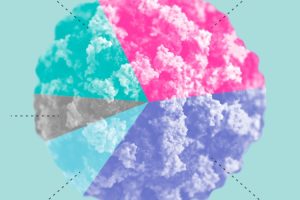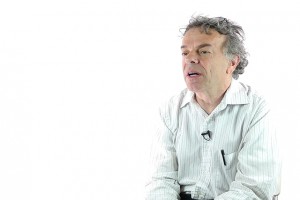How does a wasp venom peptide selectively inhibit ...
A new study explores the mechanism by which a peptide contained in wasp venom inhibits cancer cell proliferati...

Autism is defined on the basis of behavioral symptoms: impairments in social communication (examples include atypical eye gaze, social reciprocity, conversational abilities, and peer relationships) and the presence of repetitive behaviors, restricted interests and routines, and sensory sensitivities.
Although autism is defined behaviorally, it is understood to have a biological basis –abnormalities in the brain are associated with the behavioral manifestations of the disorder.
In 1943 Leo Kanner published the first paper in the US in which he described a group of 11 children he’s seen in his clinical practice who shared common features (social withdrawal/lack of interest in others; need for routines and other related features). He argued that these children should not be diagnosed with schizophrenia or with Intellectual disability (ID) but that they constituted a new, heretofore unidentified syndrome.

At around the same time, Hans Asperger in Austria identified a similar set of behavioral features in his own clinical work. His paper was published in 1944 but didn’t reach broader attention until decades later when his work was disseminated by Lorna Wing, Chris Gilberg, and others in Europe in the 1980s.
During the first couple of decades after autism was discovered, clinical descriptive studies were carried out to further understand the phenotypes. By the 1970s and 1980s, cognitive and developmental research began in earnest, with researchers searching for cognitive explanations for the core symptoms of autism. This continued into the early 1990s alongside emerging research on the underlying genetic causes (twin and family behavior genetic studies) and the early studies on behavioral treatments for autism.
As technologies for genomic analysis and brain imaging advanced at the end of the twentieth century, researchers turned their attention more fully to the biological bases of autism, identifying specific genes, common gene variants, and brain signatures associated with autism. Over the past decade, new topics have emerged relating to other non-genetic causes of autism, variability in associated conditions (from medical to psychopathology), and novel treatments. Now, attention has turned to some of the gaps in the literature – investigating autism in girls, studying those individuals who fail to acquire language, changes in autism during adulthood and aging, and how to translate knowledge acquired in the lab to community services that will more effectively support children and adults with autism and their families.
As noted, they fall into two broad groups:
Persistent deficits in social communication and social interaction across multiple contexts:
Restricted, repetitive patterns of behavior, interests, or activities:

Autism may be seen without other accompanying disorders or, more often, co-occurring disorders, including known genetic syndromes (e.g., fragile X syndrome; tuberous sclerosis), other neurodevelopmental disorders (intellectual disability/ID, developmental language disorders, ADHD, etc.), behavioral problems (e.g., aggression or self-injury), psychopathology (anxiety, depression, etc.) or medical conditions (sleep, gastrointestinal problems, epilepsy, etc.).
Co-morbid characteristics of people with autism range from cognitive (intellectual disability, language impairment) to behavioral (challenging behaviors, etc.), medical conditions (sleep, epilepsy, gastrointestinal problems), and psychopathology. The majority of children and adults with autism have one or more co-morbid conditions. These co-morbidities are often more debilitating than the core symptoms of autism and need to be considered as part of any treatment plan.
The search for underlying neural abnormalities associated with autism has been rich and complex. There is no single lesion or brain region that is atypical; instead, autism is a disorder that is best considered at the systems level. To date, the most widely accepted view is that autism can be generally characterized as a disorder of connectivity – it is a problem (both structural and functional) in how different areas of the brain are involved in complex information processing (e.g., social information; language) communicative with one another. This is a broad perspective and one that is shared by other neurodevelopmental disorders —we don’t yet have enough studies that directly compare individuals with different disorders in brain imaging research to understand what is distinctive about the brain in autism.

In terms of cognitive features, there are three cognitive theories of autism – they are not mutually exclusive, and it is likely that they are all true of at least some people with autism:
There is enormous variability in the severity of how autism is manifest, but across the spectrum, it is more common in boys (about four boys to every girl). There are also developmental changes in the expression of the disorder.
Autism emerges during the second year, beginning with declines in social engagement, eye contact, and lack of progression (or loss) in language development. In some children, language develops during the preschool years, and a minority catch up to their peers, though they remain impaired in their ability to use language effectively in social contexts. Repetitive behaviors, sensory sensitivities, and restricted interests increase during this preschool period. Around 4-5 is when symptoms peak in most children. During the early school years, symptoms stabilize, but in adolescence and adulthood, we see moderate declines in the severity of core autism symptoms in many individuals with ASD. However, during this period, anxiety and depression may increase, but these can be managed in some individuals with medication and behavioral therapy.
Autism is a complex neurodevelopmental disorder that has no single cause. We, therefore, prefer to discuss factors that increase risk – in only rare cases can one identify a single factor that causes autism. It is a genetic disorder – both inherited, and non-inherited genetic events are known to be associated with autism. In addition, non-genetic factors also contribute risk for autism, and these are likely to interact with genetic risk factors. Importantly, there is overlap in both the genetic and non-genetic factors that cause autism with those associated with other neurodevelopmental disorders such as developmental language disorder, ADHD, or schizophrenia.
Autism runs in families. Monozygotic twins are more likely to be concordant for autism than dizygotic twins; siblings are at higher risk than other children in the population. The risk for autism in the population is currently estimated at between 1 in ~60 to 1 in 100. In contrast, younger siblings of children with autism have a 1 in 10 to 1 in 20 chance of developing autism.
These facts point to inherited genetic risk factors that are likely to involve multiple risk gene alleles. There are also both inherited and non-inherited (spontaneous mutations) genomic events that involve identifiable mutations (deletions and duplications or other alterations) in single genes or segments of DNA, called copy number variants, that have been found in individuals with autism.
Non-genetic factors that increase the risk for autism have been identified in epidemiological studies. These include, for example, increased parental age, prenatal exposure to certain drugs (e.g., thalidomide), infection or high levels of traffic pollution, or post-natal infections such as encephalitis. The mechanism is still not known – these factors have only recently been identified.
The primary problems in autism for people with fluent language involve the use (or pragmatic aspects) of language. People with autism have problems with conversations, including staying on topic, providing information or clarifications to facilitate their listeners’ understanding, use of social language (greetings, chit-chat, etc.), understanding non-literal language (e.g., white lies or sarcasm), and telling stories.
Some verbal children and adults with autism can sound very ‘formal’ – they may speak in monologues (not allowing the listener to interject with comments etc.), and use rare, perhaps arcane words and formal linguistic constructions not typical for conversations. Their stories may list facts and events but lack details about people’s motives, feelings, etc.
Many people with autism fail to acquire fluent speech. Estimates are that about 25-30% fit this group, even after access to intervention.
Some do acquire language but remain behind their peers and have characteristics of developmental language disorder (e.g., problems with grammar, verbal working memory, i.e., the ability to hold spoken language in memory and later repeat) – for these people, autism is co-occurring with a language disorder. Others acquire almost no spoken language; this is true for about one-quarter of people with autism.
The best treatments currently available for autism include behavioral treatments such as applied behavioral analysis. This involves breaking complex tasks down into simpler steps and training each step using rewards to motivate the child. These kinds of treatments are most effective when it is integrated with a developmental approach. Intensive early interventions can dramatically reduce symptom severity and increase cognitive and language abilities. For older children who are verbally fluent, a variety of social skills programs can be helpful. One example is using social stories to help a child learn the skills needed in different settings. An example might be a story that includes all the skills needed to do well on the first day of school (e.g., saying hello to the teacher, how introducing oneself to other children, appropriate behavior, etc.).
Pharmacological treatments are used to treat associated conditions (behavioral problems, ADHD, anxiety, sleep, epilepsy), but so far there are no drugs that target autism symptoms.
The future of treatment for autism is similar to what we are beginning to see in other areas of medicine – a personalized approach that targets the specific underlying biology and behavioral symptoms. As more is learned about the basic biology of autism – identifying genes, their expression, etc. – the expectation is that new drug treatments will be developed that may be useful for individuals with those genetic mutations. More targeted behavioral treatments are also on the horizon, especially those that can be effectively delivered and disseminated to a broader community. Ultimately, we will have personalized combinations of drug/behavioral treatments that, when delivered early in life, soon after the onset of the disorder, will effectively reduce the severity and increase each person’s functional adaptation to society.
Edited by Ksenia Vinogradova

A new study explores the mechanism by which a peptide contained in wasp venom inhibits cancer cell proliferati...

Radiologist Jeremy M. Wolfe on search strategies in our everyday life, amnesiac search, and false alarms at me...

Philosopher Jonathan Birch on memes, cultural evolution and the difference in altruistic behaviour between hum...